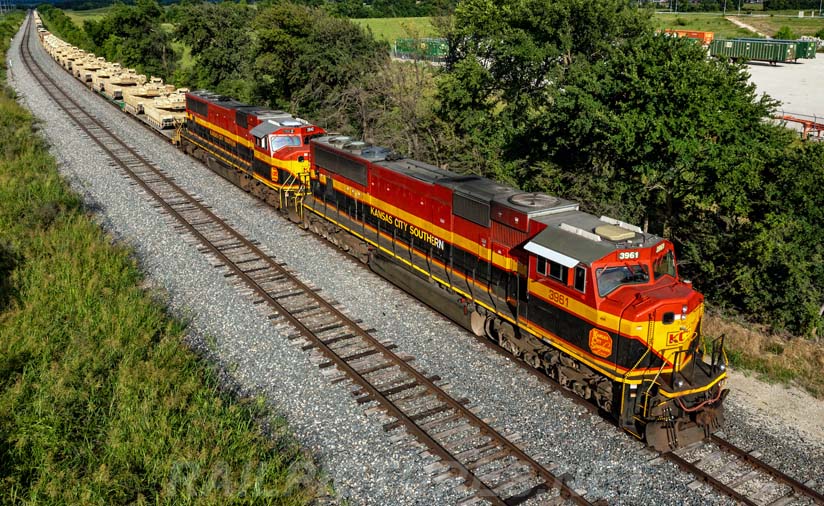
America
North America - A fusion of two railroads should occur sometime within the next year or so, creating a first for the North American
continent.
A proposed merger of two Class I systems, the Canadian Pacific (CP) and Kansas City Southern (KCS), would establish the first to connect Canada, the U.S., and
Mexico with a single line.
To be called the Canadian Pacific Kansas City (CPKC), the two lines filed a merger application with the Surface Transportation Board (STB) last
October.
Nearly 1,000 letters of support accompanied the proposal.
These came from shippers, regional railroads, business and civic groups, and even some labor unions.
So reports Bill Stephens, rail columnist with the Kalmbach publishing group.
Such support should assure eventual approval.
With caveats, of course.
The CPKC expects to double traffic within three years.
It wants to do this by avoiding a Mississippi River crossing and the Chicago rail complex which slows shipments from western Canada and the U.S. Midwest to
Houston and beyond.
The merged companies propose to do this by crossing Iowa and Missouri from Minneapolis to Kansas City on rails already owned by KCS.
The new line would serve Chicago, as CP does now, and eastern Canada by trackage rights CP has between Chicago and Detroit.
It would also connect to Dallas and the deep south by the Meridian Speedway, which KCS co-owns with the Norfolk Southern.
Plans include building double trackage and installing electronic traffic control across Iowa and Missouri.
Dozens of passing sidings would be extended.
Such plans should bode well for rail, construction, and auto assembly unions as well as for shippers and the public.
The combined lines would headquarter in Kansas City, a huge plus for the KC area including Leavenworth, city and county.
We have all heard and experienced shortages and price increases of goods due to California's well-documented port congestion.
CPKC spokespersons promise to avoid that state's regulations, problems, and associated costs by connecting Mexico's Pacific Coast port of Lazaro Cardenas with
Mexico City, Chicago, and Canada's Atlantic Coast on rails KCS and CP already own or control.
All this on a single railroad without the delays of mid-trip changes of carriers should make everyone, especially consumers, happy.
Mexican civil authorities gave approval of the merger in November.
In mid-December, KCS shareholders voted to merge.
Immediately, the firm placed its stock in a trust which guaranteed separate operation of the two railroads until given the green light to merge by the
STB.
If plans mature as hoped, some communities which now experience an occasional train will see many more.
And these could be two miles long or longer.
While such frequency and length may ruffle some local feathers, the CPKC principals have promised to be good neighbors.
They expect to meet with civic leaders to solve such issues.
For manufacturers looking for tax relief and cheaper labor, the new railroad should offer lots of small-town alternatives.
Competing railroads which now have traffic rights over segments of the two lines should not feel threatened.
Such rights work both ways.
While KCS owns the most used bridge over the Rio Grande into Mexico, Union Pacific owns or controls most rails leading to it.
Upon filing the merger application, Keith Creel, president and CEO of the CP, said, "CPKC will become the backbone connecting our customers with
newmarkets, driving economic growth while delivering environmental benefits."
The last point refers to CP's leadership in testing hydrogen fuel-cell power to reduce the line's carbon footprint.
The two lines have asked the STB to give its response within 10 months.
This seems optimistic when former rail mergers took as long as ten years to win approval.
That shouldn't prove the case here.
Walt Mack.
(there was no image with original article)
(usually because it's been seen before)
provisions in Section 29 of the Canadian
Copyright Modernization Act.
